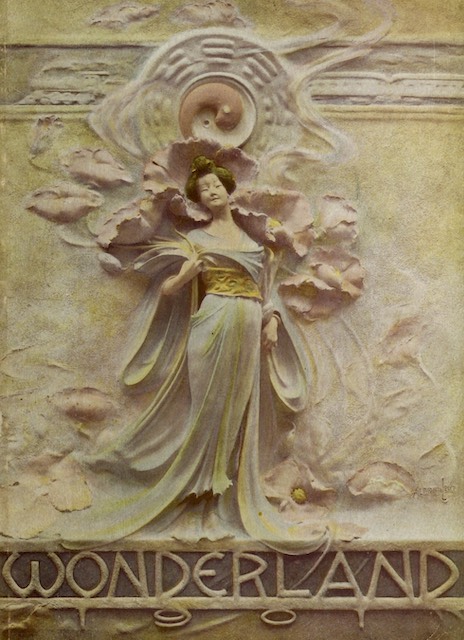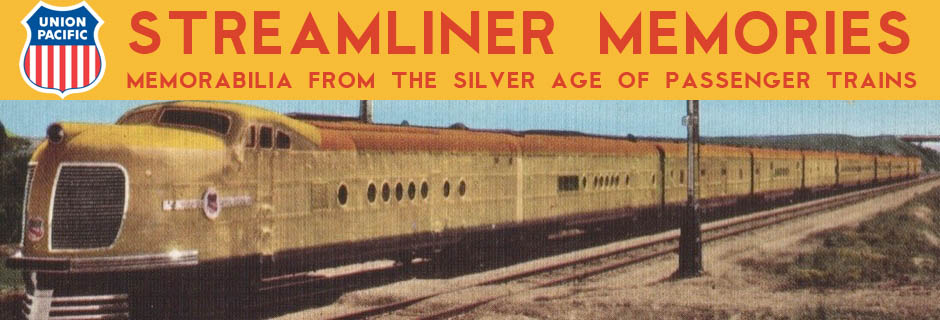Northern Pacific inaugurated the North Coast Limited on April 29, 1900. Yet it is indicative of how far the Wonderland series had strayed from being solely an advertisement for NP transportation that the new train was only mentioned once in the 1900 edition, and then on practically the last page and simply to announce when it would be introduced.
 Click image to download a 49.2-MB PDF of this 112-page booklet.
Click image to download a 49.2-MB PDF of this 112-page booklet.
The 1901 edition made up for this with a seven-page article describing the train and accompanied by more than a dozen photographs. But this article was preceded by a 15-page article taking an in-depth look at the history of Northern Pacific’s trademark, the monad. Accompanied by more than a dozen brightly colored illustrations of similar symbols in Asian culture, the article once again revealed Olin Wheeler’s abilities as a historian and not just a writer of advertising copy.
In 1960, Northern Pacific published a little (3-1/2″x7-1/2″) booklet on the history of its logo that was essentially an abstract of Wheeler’s article. The illustrations in the booklet were all taken from Wheeler’s work though they were smaller and less detailed than in the 1901 Wonderland.
The yin-yang, as the symbol was also known, represented the balance of nature: “light and darkness, force and matter, motion and rest, fire and water,” making it appropriate, Wheeler notes, “as the symbol or trade-mark of a great transportation company.” NP adopted it as its logo in 1893 after its officials saw the symbol on the Korean flag at Chicago’s Columbian Exposition.
Appropriately, the monad logo was prominently featured on the Alfred Lenz sculptures shown on the front and back cover of this booklet. Unlike the sculptures used on the 1900 edition, these appear to have been painted in pastel colors. In place of the robed Caucasian woman symbolizing American progress and civilization, the cover shows a robed Asian woman symbolizing progress in transportation represented by the Great Northern Steamship Company (which Wheeler calls the Northern Pacific Steamship Company), which began operating ships between Seattle and Yokohama in 1901. This was separate from the Great Northern Pacific Steamship Company, which later operated between Portland and San Francisco.
In addition to the usual article about Yellowstone, other articles in this edition describe the Custer battlefield (with a full-color illustration of the Last Stand used as the publication’s frontispiece); the history one of Lewis & Clark’s men; the Siskiyou Mountains (which were on the Southern Pacific, not Northern Pacific, but would be on the route taken by Northern Pacific passengers bound for California); and the (gold-bearing) sands of Nome, Alaska.
